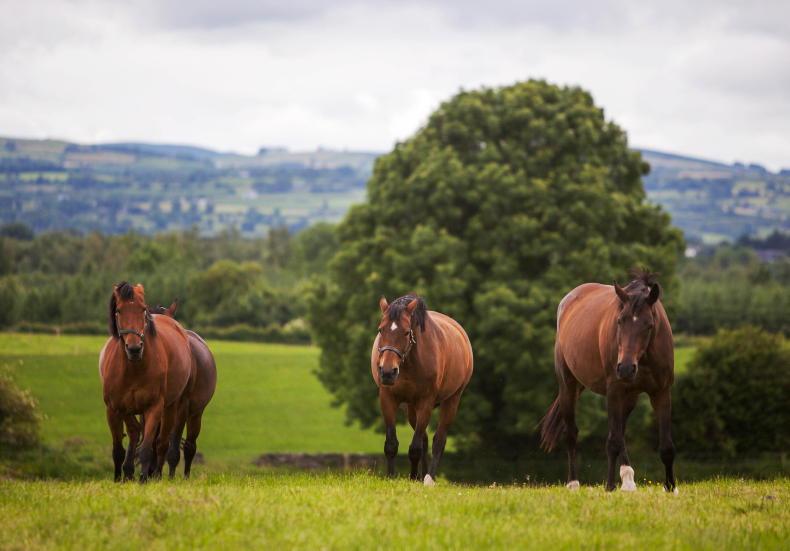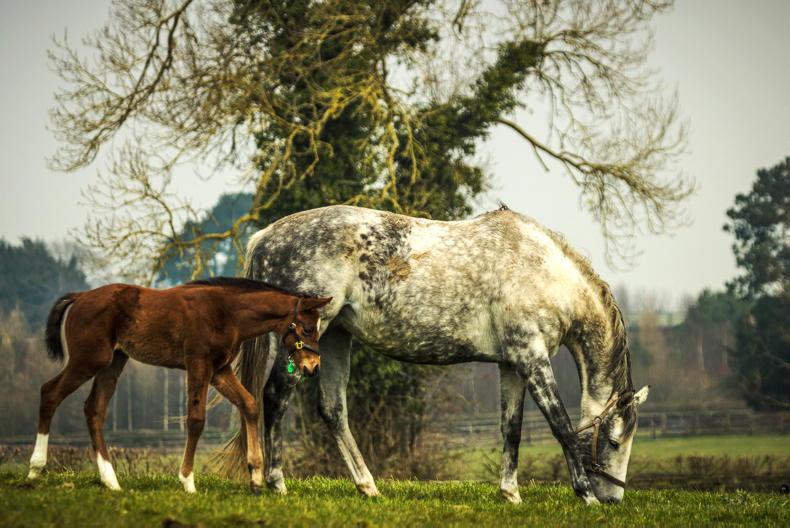Adriana Van Tilburg
Equine Journalist
MY most special and favorite foaling story happened last year. In the summer of 2020 I helped out at the farm of Harm Thormählen in Holstein, Germany. The mare Z-Capitola (Cero I – U-Capitola x Capitono, breeder: Harm Thormählen) had been sent to the clinic for being seriously ill and was diagnosed with Equine Metabolic Syndrome (EMS). She refused to eat for five days and the vet wanted to end her suffering. I was one of the few who refused to give up.
I visited her twice a day because the clinic was on my way to work. An assistant discovered she wanted to eat grass so the vet gave her another chance. Two days later she got laminitis. So basically everybody lost hope again.
I asked if I could use the Bemer Horse Therapy set on her. I used it both at the clinic and when she arrived back home. It was a very intense journey. During the months that followed I always talked with the unborn foal. I called him Milkshake because he was so lively.
For weeks before Z-Capitola was supposed to foal, I stayed close by. People were worried that the foal would have all kinds of defects because of the medical treatments on the mare. Everyday I was at home during the day and from 7pm I would be back at the stable. One particular evening I was a bit later to the mare than usual and received several phone calls during my 30-minute drive to the stable. I was 10 minutes too late to see ‘Milkshake’ being born, but arrived safely and he was a strong, tall colt! The afterbirth came off very smoothly and everything was perfect with him. It was such a relief!
Sam Sinclair
Carrickview Stud
IT was April 2020 and we had just been put into lockdown. That year was a scary year, a lot of mares having big foals and needing a lot of help to get them here safe and well. I have many stories, but one in particular stands out as it’s not so often you need to help with a cesarean section on a horse!
It was around 6am and I was just up and starting, the 18-year-old Heraldick mare was a few weeks from foaling and had no signs of an udder at midnight the night before. I had a bit of a feeling to go to her first thing and to my surprise she was walking around in circles with a foal’s foot coming! I gave her a minute and got the vet, usually mares have foaled in five or 10 minutes on their own, so it was strange that she was still pushing and no further forward.
We tried to help and gave it a gentle pull, however we made no headway. So we sedated her and I put her down on the ground with a little trick I learned from a stunt man when I was a little boy! I sat on her head while the vet froze her side and performed the emergency caesarean section. The vet made the incision and we pulled out the foal, a beautiful black filly by Ramiro B. Sadly, the mare was bleeding internally, had ruptured and her colour was drawing fast. At this stage we knew the best thing to do was put her to sleep.
We fed the filly from a bottle for a day then got a foster mare and sent her to be cared for by experienced foal handler Barbara Hanna who introduced the mare and foal and got the filly big and strong. She has thrived and is now a healthy two-year-old with a bright future.
Kathryn O’Hagan
Show Jumper and Equine Lecturer
MY mare Unique Boutique was in foal to Malito de Reve, she was three weeks away from her first foaling. We had checked her in the field in the evening and decided that she looked to be moving on, so said we would bring her in the next day to settle into the foaling stable. The next morning I went out and she had foaled in the field! So delighted with herself!
Cheryl Broderick
Breeding Manager Ballypatrick Stables
THE first foal we bred by embryo transfer was a big occasion in our yard. It was the first time we decided to go down that road.
It was a very proud moment as before we sold Ballypatrick Mystique, who was a five- and seven-year-old National Champion and also won a bronze medal for a Greg at the World Breeding Championships in Lanaken, we decided to take embryo from her. She gave us a twin flush which ended up being two fillies. We implanted them in two batty recipient mares and this is first of them in the picture. A special moment.


 This is a subscriber-only article
This is a subscriber-only article
 It looks like you're browsing in private mode
It looks like you're browsing in private mode












SHARING OPTIONS: